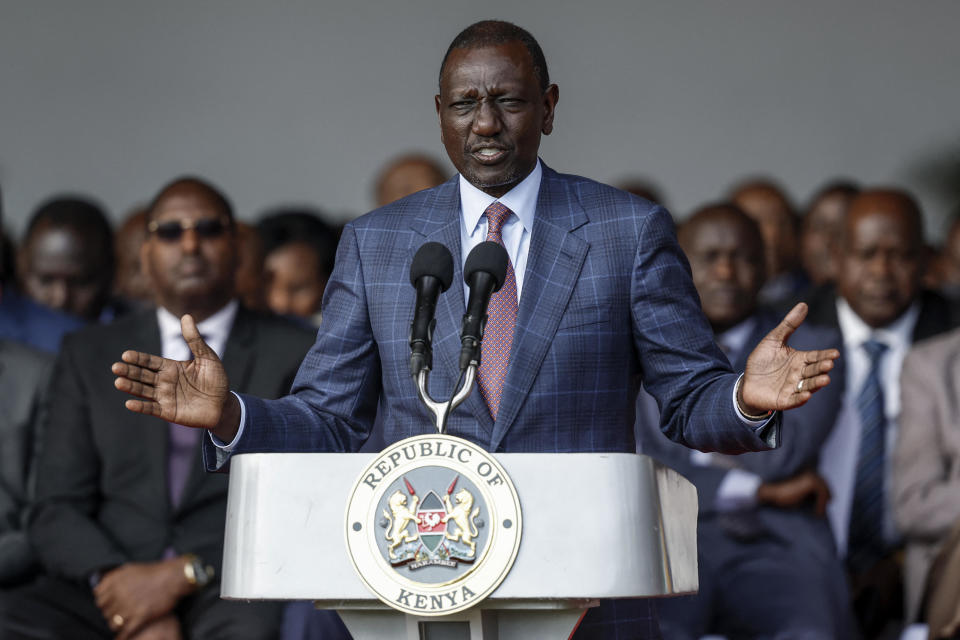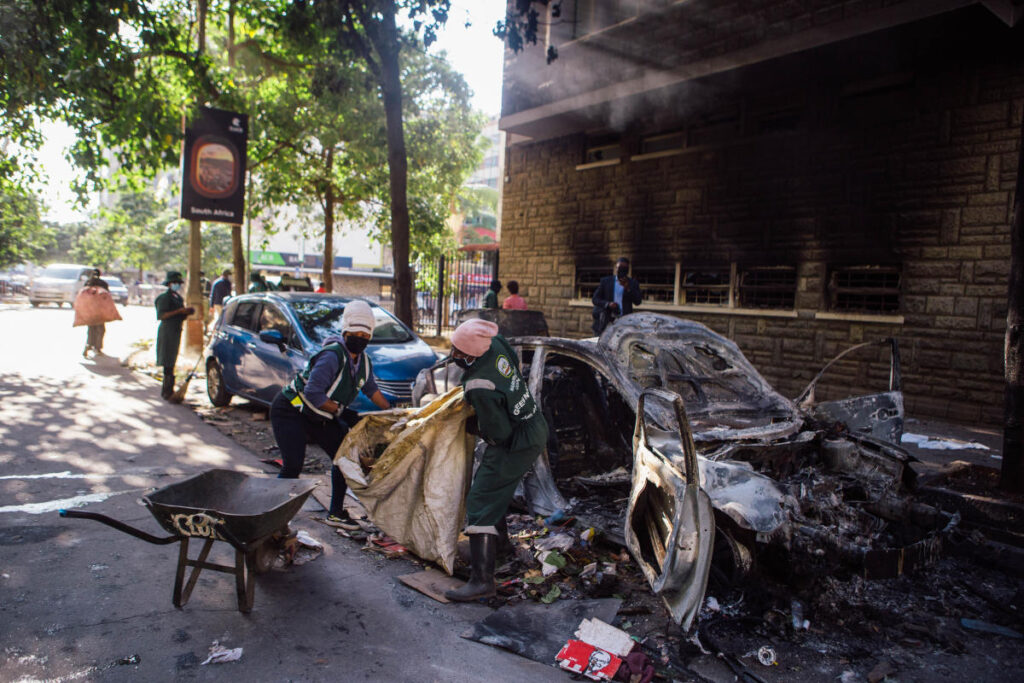Johannesburg — At least that’s what human rights organizations say 22 demonstrators were killed and many more injured on the streets of Kenya Tuesday as they clashed with police in chaotic demonstrations over a controversial tax hike-laden finance bill passed by the country’s parliament. With the dead and injured still being counted, the demonstrators’ message appeared to have convinced the Kenyan president to withdraw. He said Wednesday he would not sign the bill into law.
Protesters in the capital Nairobi broke into the parliament building and set part of it on fire on Tuesday, just after lawmakers voted to pass the controversial financing bill. Kenya’s National Commission for Human Rights said at least 22 people were killed in the clashes, and other organizations cited similar death figures.
Wednesday afternoon, in his second televised address in just 24 hours, the president said William Ruto said, “I yield and will not sign the bill.”


The deeply unpopular tax hikes were intended to raise nearly $2.3 billion to help address Kenya’s dire finances. The national debt has been spiraling out of control for years, putting the government under pressure from foreign financial institutions and forcing it to give up much of its annual revenue in interest payments.
Ruto on Wednesday said while sending the finance bill back to Parliament for amendments, there should be a national dialogue to find out how to resolve the economic crisis.
He called for “a conversation as a nation about how we tackle the country’s affairs together, the debt, the budget, together.”
Members of the protest movement, largely led by younger Kenyans, vowed in social media posts before Ruto’s Wednesday speech that they would return to the streets on Thursday for another day of demonstrations.
“You can’t kill us all,” activist Hanifa Adan said in a message. “Tomorrow we will march peacefully wearing white for all our fallen people. You will not be forgotten!”
It was not immediately clear whether protests planned for Thursday would go ahead given Ruto’s decision not to sign the funding bill.


The protests began last week, initially against proposed sharp tax increases on basic products such as bread, cooking oil and diapers. These most controversial measures were abandoned before the vote in parliament on Tuesday.
The demonstrations have been organized mainly by younger Kenyans, Generation Z, who have used social media to attract large numbers of people to the events.
The demonstrations started peacefully but grew increasingly bitter until they exploded into violence on Tuesday, with police firing tear gas, water cannon and live ammunition as they tried to control the raucous crowds.
The protesters who forced their way into parliament destroyed the building’s interior and set fire to parts of the complex, shocking lawmakers as they burst through the chamber’s doors and sending some fleeing for shelter in basement hallways.
Parliament’s ceremonial mace, which symbolized the authority of the legislature, was stolen and seen in the hands of protesters as they walked out on the road.
In a speech Tuesday evening, Ruto said all resources would be used to “thwart any attempt by dangerous criminals to undermine the security and stability of our country,” and later deployed Kenyan armed forces to help quell the protests.
Medics and hospital administrators reported on Tuesday that nearly 300 people nationwide had been injured in the clashes.
United Nations Secretary-General Antonio Guterres said he was “deeply saddened” by reports of deaths and injuries, “including those of journalists and medical staff, linked to protests and street demonstrations in Kenya.”
He urged Kenyan authorities to “exercise restraint” and called for peaceful demonstrations.
In a statement on Wednesday, human rights group Amnesty International said responsibility for Tuesday’s deaths “lay squarely with President Ruto, even though he was not on the streets. He cannot escape his responsibility.”
Homeowners Enlist “Squatter Hunter” to Get Their Homes Back







